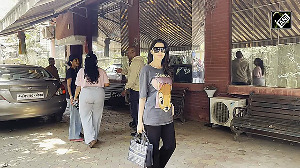Mumbai has taken the lead in the country's mall space followed by National Capital Region and Bangalore. On the other hand, Chennai, the city credited with pioneering organised retailing, brings up the rear end with a minuscule three per cent of the total mall space in India.
Chennai was at the forefront of the Indian retail revolution in late 1990s. It was the only city to witness the presence of five major department stores till 2000.
Chennai presented itself as a likely experimental market due to its relatively low real estate costs and moderate operating expenses, strong catchment characteristics.
Noting this Chanakya Chakravarti, joint managing director, Cushman & Wakefield India told Business Standard: "Though Chennai was the first city in India to take forward organised retail, it seems to be lagging behind now, with very little activity in this area compared to other cities."
Cushman & Wakefield India says that Mumbai, which had only 150,000 sq ft of mall space in 2000 is now sporting 3,800,000 sq ft of the same, including the projects under construction. It today accounts for 31 per cent of the mall space built up in the country so far.
NCR has also made it big at 21 per cent of the mall space. Bangalore accounts for another 15 per cent. Even Hyderabad and Kolkata have a 12 per cent chunk each in the country's mall space. What is most remarkable is that even Pune has overtaken Chennai at six per cent.
Major reason pointed out for the lack of development on the malls front in this southern metropolis is attributed to the unorganised manner in which the real estate development has taken place in the city.
Malls across various cities in the country have seen to be ideally located in suburbs of the cities. Malls require about 1,00,000 to 1,50,000 sq ft and a large parking space.
Chakravarti said that the city's real estate development has started to evolve to new corridors only in the last two or three years. Ramesh Nair, senior manager, Jones Lang LaSalle India says that the 30 per cent ground coverage rule for multi storied buildings has been one of the barriers which has limited the number of malls within the city.
Chakravarti said that the retailing industry which is still evolving is focusing on larger metros such as Mumbai, New Delhi, Bangalore, etc. which have cosmopolitan populations, with higher propensities to spend on a varied range of services and merchandise.
It is because of the same reason that the retail revolution is more firmly grounded in other cities than in Chennai today.
Anshuman Magazine, managing director, CB Richard Ellis said that the increased purchasing power of the middle class in Bangalore and Hyderabad has related itself into the development and growth of retailing in these cities recently. The retail space has been growing at 25 per cent in the commercial built-up space.
https://in.rediff.com/money/2004/apr/01binter.htm Raghu Pillai, president and chief executive, retail sector, RPG Enterprise said, "Chennai, Bangalore and Hyderabad have similar customer profile and vary only in small degrees of cosmopolitan character." Organised grocery and food retailing is estimated to be around 45 per cent of the total retail segment.
Almost all major retail chains such as Shoppers Stop, RPG Group's FoodWorld, MusicWorld, and Health and Glow (Cosmetics), Tata's Westside, C Raheja Group's Shoppers Stop and Globus, LifeStyle, Landmark, Pantaloon, Piramal's Crossword, Vitan Ltd, Niligris have presence in the city.
In fact it was the starting point for several of them such as Landmark, Westside, RPG's retailing business and Life Style. Ebony and Vitan are the failure stories of Chennai.
Market observers feel the choice of the Delhi-based Ebony's location was wrong as it did not have ample parking space which is essential. As for homegrown Vitan it was a pure case of buckling under competition.
But the city has missed the bus to big-ticket retailing. The city is yet to witness names like Pantaloon's Big Baazar and Food Baazar, Piramal's Pyramid , RPG's Giant Hypermarket is on anvil.
The largest and one of the oldest retail chain Viveks Ltd, director, Srinivasa, says though there has been a lull on the retail segment for the last two years, real estate activity on the retail segment has been picking-up.
The city has added to its name, the Abirami Mall with about 2,20,000 sq ft and Isaphani centre with 1,75,000 sq ft. The city's largest mall - Spencer's Plaza also since its III Phase expansion now covers 5,00,000 sq ft for retailing out of its total built-up space of 1.1 million square feet. But these are no comparison to the mall developments seen in the other cities.
In Delhi, Mumbai and Hyderabad, the development have been of off-central business districts (CBD), such as Gurgaon, Malar, Tardeo, Begumpet. Bangalore has a combination of CBD and suburban locations such as Koramangala. Chennai is yet to see any major retail development in any of its suburbs.
But not all hope is lost. Chennai is showing signs of catching up in the retail built-up space. According to Cushman & Wakefield the upcoming mall space is estimated to be around Mumbai 6.5 million sq. ft, by mid 2005 leading the pack.
Delhi will have 5.5 million sq ft by 2006, Hyderabad 0.86 million sq. ft. by 2005, Bangalore 1.04 million sq. ft. by end 2004 and Chennai 1.19 million sq. ft. by 2005.






 © 2025
© 2025